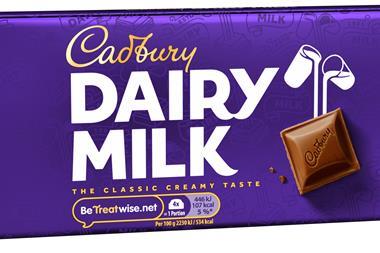New labelling systems may prove to be a waste of time in helping to reduce obesity, delegates at the Westminster Diet & Health Forum seminar heard this week.
Consultant dietician Angie Jefferson, who has worked in both the NHS and commercial sectors, said all evidence across the globe pointed to the fact that “labelling helps the educated, motivated customer and tends to be ignored by those who need help”.
Traffic light labelling - the use of red, amber and green to signify whether a food is healthy or unhealthy - is one of the Food Standards Agency and government’s preferred signposting methods.
But Jefferson said it would not be helpful to add to people’s guilt. “The problem is people don’t enjoy food and it will all be useless unless we can get that back,” she said.
Her comments followed those of food scientist Dr Reg Wilson, who questioned the validity of a traffic light system in fighting obesity.
“It is by no means clear that introducing it will impact on certain behavioural measures the way government expects,” he said.
However, government is convinced a simple, signposting solution like traffic lights will work. Deputy chief medical officer Dr Fiona Adshead said a “clear, at a glance message” was needed because shoppers only take a few seconds to choose a product.
Department of Health head of health improvement and prevention Imogen Sharp said traffic light labelling was first mentioned in a Canterbury report in 1984 but that 20 years later signposting measures would succeed because new public service targets for obesity would “drive us and hold us to account”.
Labelling received the most responses in the White Paper consultation. This consultation received unprecedented response, with 153,000 members of the public giving their views compared to a norm of 1,000 for DoH consultations.
Consultant dietician Angie Jefferson, who has worked in both the NHS and commercial sectors, said all evidence across the globe pointed to the fact that “labelling helps the educated, motivated customer and tends to be ignored by those who need help”.
Traffic light labelling - the use of red, amber and green to signify whether a food is healthy or unhealthy - is one of the Food Standards Agency and government’s preferred signposting methods.
But Jefferson said it would not be helpful to add to people’s guilt. “The problem is people don’t enjoy food and it will all be useless unless we can get that back,” she said.
Her comments followed those of food scientist Dr Reg Wilson, who questioned the validity of a traffic light system in fighting obesity.
“It is by no means clear that introducing it will impact on certain behavioural measures the way government expects,” he said.
However, government is convinced a simple, signposting solution like traffic lights will work. Deputy chief medical officer Dr Fiona Adshead said a “clear, at a glance message” was needed because shoppers only take a few seconds to choose a product.
Department of Health head of health improvement and prevention Imogen Sharp said traffic light labelling was first mentioned in a Canterbury report in 1984 but that 20 years later signposting measures would succeed because new public service targets for obesity would “drive us and hold us to account”.
Labelling received the most responses in the White Paper consultation. This consultation received unprecedented response, with 153,000 members of the public giving their views compared to a norm of 1,000 for DoH consultations.


















No comments yet